Kazuma Kobayashi
Virtual Sensing to Enable Real-Time Monitoring of Inaccessible Locations \& Unmeasurable Parameters
Nov 28, 2024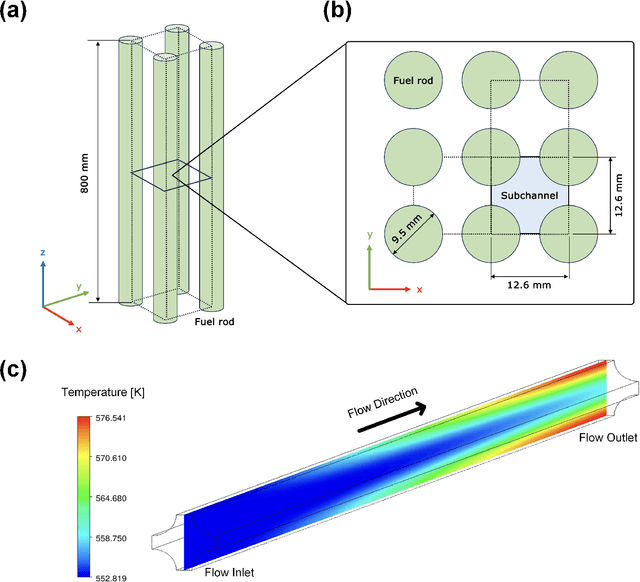

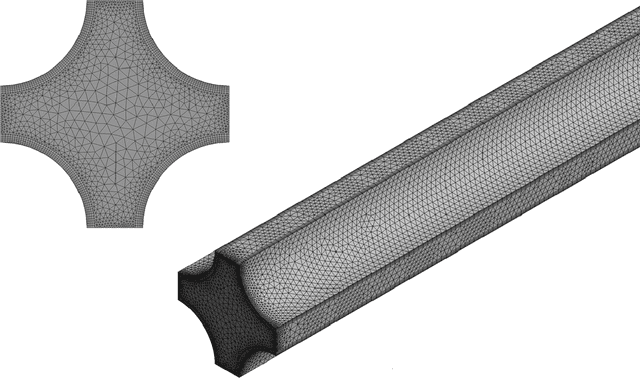

Abstract:Real-time monitoring of critical parameters is essential for energy systems' safe and efficient operation. However, traditional sensors often fail and degrade in harsh environments where physical sensors cannot be placed (inaccessible locations). In addition, there are important parameters that cannot be directly measured by sensors. We need machine learning (ML)-based real-time monitoring in those remote locations to ensure system operations. However, traditional ML models struggle to process continuous sensor profile data to fit model requirements, leading to the loss of spatial relationships. Another challenge for real-time monitoring is ``dataset shift" and the need for frequent retraining under varying conditions, where extensive retraining prohibits real-time inference. To resolve these challenges, this study addressed the limitations of real-time monitoring methods by enabling monitoring in locations where physical sensors are impractical to deploy. Our proposed approach, utilizing Multi-Input Operator Network virtual sensors, leverages deep learning to seamlessly integrate diverse data sources and accurately predict key parameters in real-time without the need for additional physical sensors. The approach's effectiveness is demonstrated through thermal-hydraulic monitoring in a nuclear reactor subchannel, achieving remarkable accuracy.
Virtual Sensing for Real-Time Degradation Monitoring of Nuclear Systems: Leveraging DeepONet for Enhanced Sensing Coverage for Digital Twin-Enabling Technology
Oct 17, 2024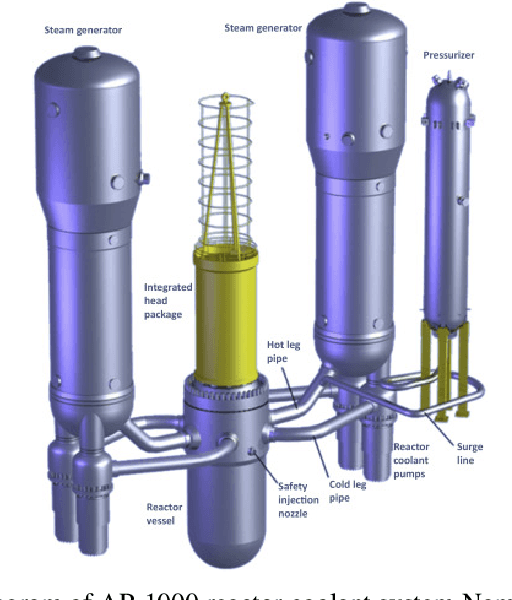

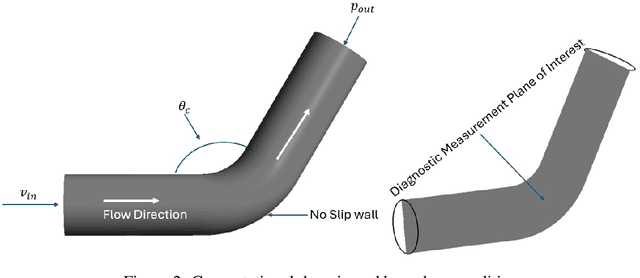

Abstract:Effective real-time monitoring technique is crucial for detecting material degradation and maintaining the structural integrity of nuclear systems to ensure both safety and operational efficiency. Traditional physical sensor systems face limitations such as installation challenges, high costs, and difficulties in measuring critical parameters in hard-to-reach or harsh environments, often resulting in incomplete data coverage. Machine learning-driven virtual sensors offer a promising solution by enhancing physical sensor capabilities to monitor critical degradation indicators like pressure, velocity, and turbulence. However, conventional machine learning models struggle with real-time monitoring due to the high-dimensional nature of reactor data and the need for frequent retraining. This paper explores the use of Deep Operator Networks (DeepONet) within a digital twin (DT) framework to predict key thermal-hydraulic parameters in the hot leg of an AP-1000 Pressurized Water Reactor (PWR). In this study, DeepONet is trained with different operational conditions, which relaxes the requirement of continuous retraining, making it suitable for online and real-time prediction components for DT. Our results show that DeepONet achieves accurate predictions with low mean squared error and relative L2 error and can make predictions on unknown data 160,000 times faster than traditional finite element (FE) simulations. This speed and accuracy make DeepONet a powerful tool for tracking conditions that contribute to material degradation in real-time, enhancing reactor safety and longevity.
Can Physician Judgment Enhance Model Trustworthiness? A Case Study on Predicting Pathological Lymph Nodes in Rectal Cancer
Dec 15, 2023Abstract:Explainability is key to enhancing artificial intelligence's trustworthiness in medicine. However, several issues remain concerning the actual benefit of explainable models for clinical decision-making. Firstly, there is a lack of consensus on an evaluation framework for quantitatively assessing the practical benefits that effective explainability should provide to practitioners. Secondly, physician-centered evaluations of explainability are limited. Thirdly, the utility of built-in attention mechanisms in transformer-based models as an explainability technique is unclear. We hypothesize that superior attention maps should align with the information that physicians focus on, potentially reducing prediction uncertainty and increasing model reliability. We employed a multimodal transformer to predict lymph node metastasis in rectal cancer using clinical data and magnetic resonance imaging, exploring how well attention maps, visualized through a state-of-the-art technique, can achieve agreement with physician understanding. We estimated the model's uncertainty using meta-level information like prediction probability variance and quantified agreement. Our assessment of whether this agreement reduces uncertainty found no significant effect. In conclusion, this case study did not confirm the anticipated benefit of attention maps in enhancing model reliability. Superficial explanations could do more harm than good by misleading physicians into relying on uncertain predictions, suggesting that the current state of attention mechanisms in explainability should not be overestimated. Identifying explainability mechanisms truly beneficial for clinical decision-making remains essential.
Expert Uncertainty and Severity Aware Chest X-Ray Classification by Multi-Relationship Graph Learning
Sep 06, 2023Abstract:Patients undergoing chest X-rays (CXR) often endure multiple lung diseases. When evaluating a patient's condition, due to the complex pathologies, subtle texture changes of different lung lesions in images, and patient condition differences, radiologists may make uncertain even when they have experienced long-term clinical training and professional guidance, which makes much noise in extracting disease labels based on CXR reports. In this paper, we re-extract disease labels from CXR reports to make them more realistic by considering disease severity and uncertainty in classification. Our contributions are as follows: 1. We re-extracted the disease labels with severity and uncertainty by a rule-based approach with keywords discussed with clinical experts. 2. To further improve the explainability of chest X-ray diagnosis, we designed a multi-relationship graph learning method with an expert uncertainty-aware loss function. 3. Our multi-relationship graph learning method can also interpret the disease classification results. Our experimental results show that models considering disease severity and uncertainty outperform previous state-of-the-art methods.
Potential of Deep Operator Networks in Digital Twin-enabling Technology for Nuclear System
Aug 15, 2023Abstract:This research introduces the Deep Operator Network (DeepONet) as a robust surrogate modeling method within the context of digital twin (DT) systems for nuclear engineering. With the increasing importance of nuclear energy as a carbon-neutral solution, adopting DT technology has become crucial to enhancing operational efficiencies, safety, and predictive capabilities in nuclear engineering applications. DeepONet exhibits remarkable prediction accuracy, outperforming traditional ML methods. Through extensive benchmarking and evaluation, this study showcases the scalability and computational efficiency of DeepONet in solving a challenging particle transport problem. By taking functions as input data and constructing the operator $G$ from training data, DeepONet can handle diverse and complex scenarios effectively. However, the application of DeepONet also reveals challenges related to optimal sensor placement and model evaluation, critical aspects of real-world implementation. Addressing these challenges will further enhance the method's practicality and reliability. Overall, DeepONet presents a promising and transformative tool for nuclear engineering research and applications. Its accurate prediction and computational efficiency capabilities can revolutionize DT systems, advancing nuclear engineering research. This study marks an important step towards harnessing the power of surrogate modeling techniques in critical engineering domains.
Expert Knowledge-Aware Image Difference Graph Representation Learning for Difference-Aware Medical Visual Question Answering
Jul 22, 2023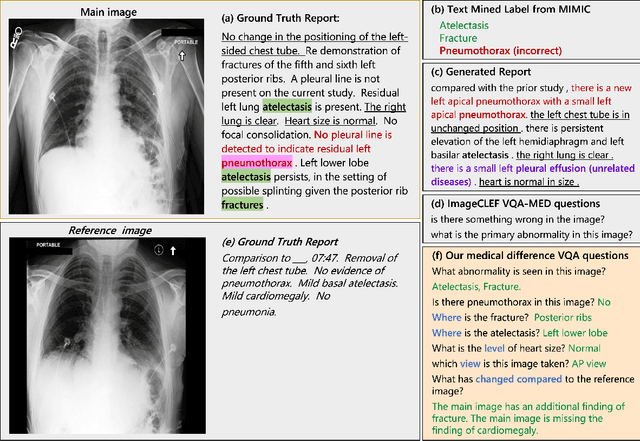
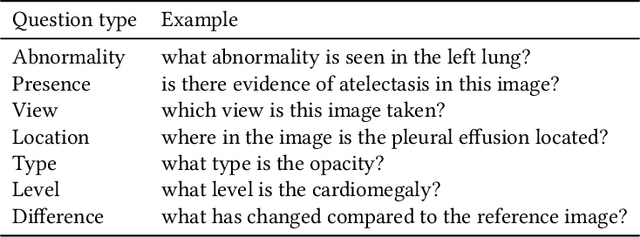
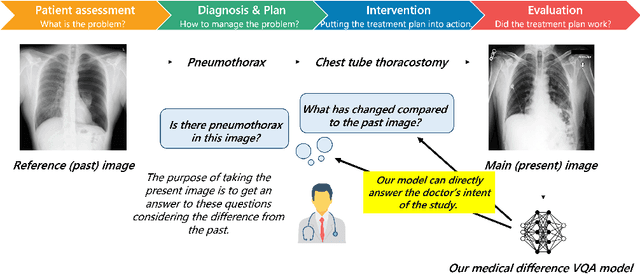

Abstract:To contribute to automating the medical vision-language model, we propose a novel Chest-Xray Difference Visual Question Answering (VQA) task. Given a pair of main and reference images, this task attempts to answer several questions on both diseases and, more importantly, the differences between them. This is consistent with the radiologist's diagnosis practice that compares the current image with the reference before concluding the report. We collect a new dataset, namely MIMIC-Diff-VQA, including 700,703 QA pairs from 164,324 pairs of main and reference images. Compared to existing medical VQA datasets, our questions are tailored to the Assessment-Diagnosis-Intervention-Evaluation treatment procedure used by clinical professionals. Meanwhile, we also propose a novel expert knowledge-aware graph representation learning model to address this task. The proposed baseline model leverages expert knowledge such as anatomical structure prior, semantic, and spatial knowledge to construct a multi-relationship graph, representing the image differences between two images for the image difference VQA task. The dataset and code can be found at https://github.com/Holipori/MIMIC-Diff-VQA. We believe this work would further push forward the medical vision language model.
Sketch-based Medical Image Retrieval
Mar 07, 2023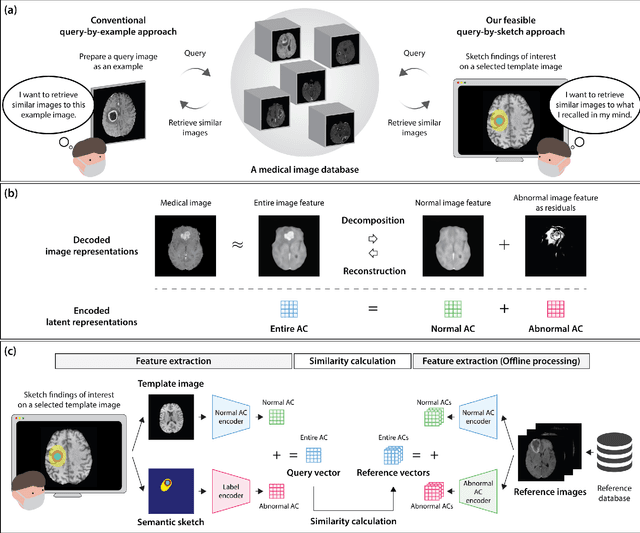
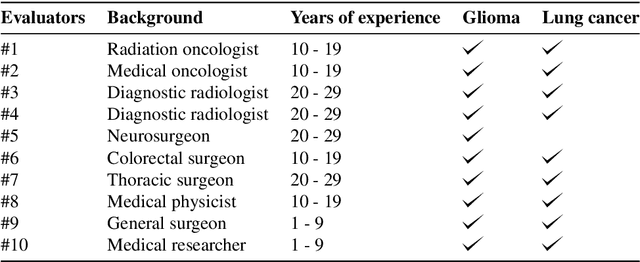
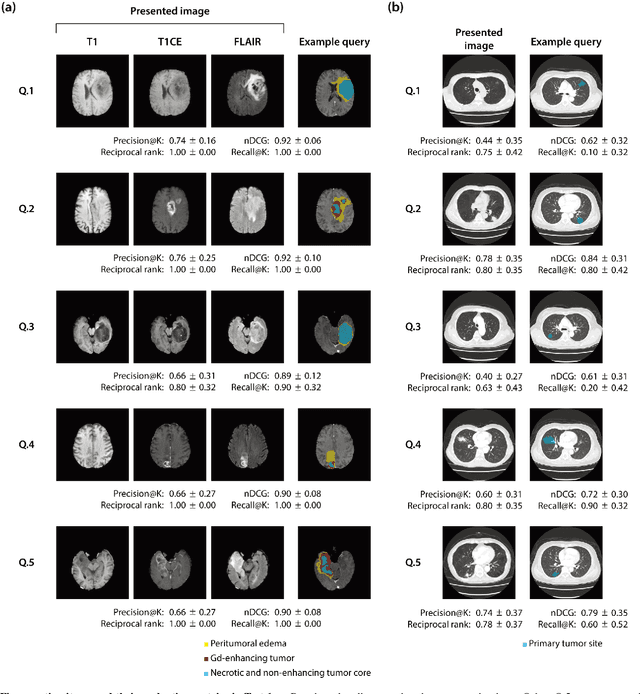
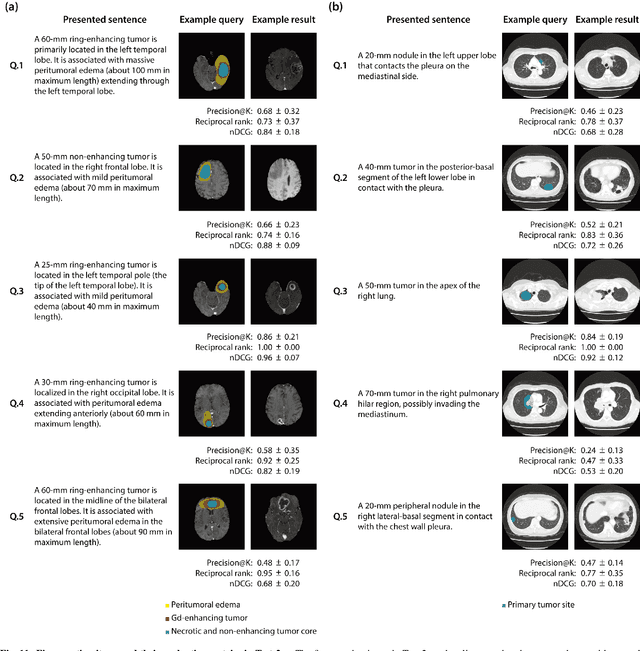
Abstract:The amount of medical images stored in hospitals is increasing faster than ever; however, utilizing the accumulated medical images has been limited. This is because existing content-based medical image retrieval (CBMIR) systems usually require example images to construct query vectors; nevertheless, example images cannot always be prepared. Besides, there can be images with rare characteristics that make it difficult to find similar example images, which we call isolated samples. Here, we introduce a novel sketch-based medical image retrieval (SBMIR) system that enables users to find images of interest without example images. The key idea lies in feature decomposition of medical images, whereby the entire feature of a medical image can be decomposed into and reconstructed from normal and abnormal features. By extending this idea, our SBMIR system provides an easy-to-use two-step graphical user interface: users first select a template image to specify a normal feature and then draw a semantic sketch of the disease on the template image to represent an abnormal feature. Subsequently, it integrates the two kinds of input to construct a query vector and retrieves reference images with the closest reference vectors. Using two datasets, ten healthcare professionals with various clinical backgrounds participated in the user test for evaluation. As a result, our SBMIR system enabled users to overcome previous challenges, including image retrieval based on fine-grained image characteristics, image retrieval without example images, and image retrieval for isolated samples. Our SBMIR system achieves flexible medical image retrieval on demand, thereby expanding the utility of medical image databases.
Interpretable Medical Image Visual Question Answering via Multi-Modal Relationship Graph Learning
Feb 19, 2023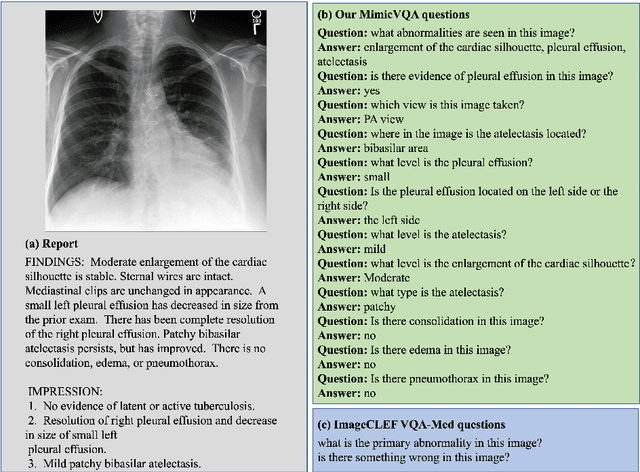
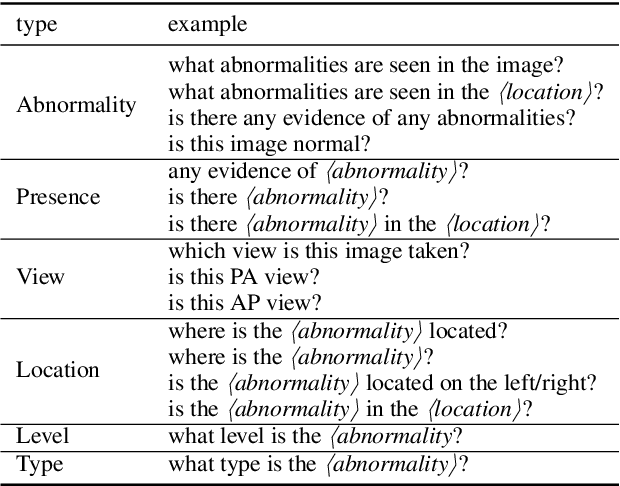
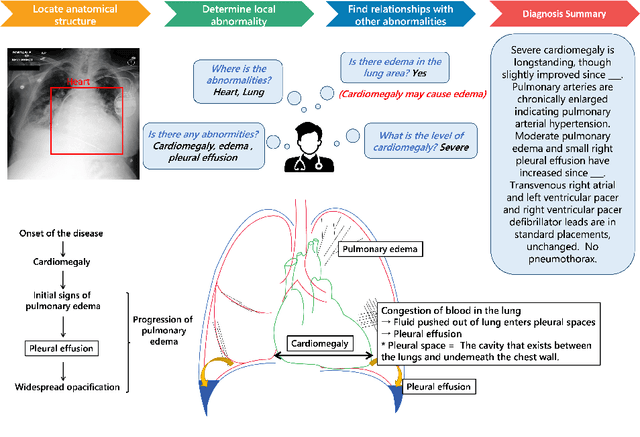

Abstract:Medical visual question answering (VQA) aims to answer clinically relevant questions regarding input medical images. This technique has the potential to improve the efficiency of medical professionals while relieving the burden on the public health system, particularly in resource-poor countries. Existing medical VQA methods tend to encode medical images and learn the correspondence between visual features and questions without exploiting the spatial, semantic, or medical knowledge behind them. This is partially because of the small size of the current medical VQA dataset, which often includes simple questions. Therefore, we first collected a comprehensive and large-scale medical VQA dataset, focusing on chest X-ray images. The questions involved detailed relationships, such as disease names, locations, levels, and types in our dataset. Based on this dataset, we also propose a novel baseline method by constructing three different relationship graphs: spatial relationship, semantic relationship, and implicit relationship graphs on the image regions, questions, and semantic labels. The answer and graph reasoning paths are learned for different questions.
Operator Learning Framework for Digital Twin and Complex Engineering Systems
Jan 18, 2023Abstract:With modern computational advancements and statistical analysis methods, machine learning algorithms have become a vital part of engineering modeling. Neural Operator Networks (ONets) is an emerging machine learning algorithm as a "faster surrogate" for approximating solutions to partial differential equations (PDEs) due to their ability to approximate mathematical operators versus the direct approximation of Neural Networks (NN). ONets use the Universal Approximation Theorem to map finite-dimensional inputs to infinite-dimensional space using the branch-trunk architecture, which encodes domain and feature information separately before using a dot product to combine the information. ONets are expected to occupy a vital niche for surrogate modeling in physical systems and Digital Twin (DT) development. Three test cases are evaluated using ONets for operator approximation, including a 1-dimensional ordinary differential equations (ODE), general diffusion system, and convection-diffusion (Burger) system. Solutions for ODE and diffusion systems yield accurate and reliable results (R2>0.95), while solutions for Burger systems need further refinement in the ONet algorithm.
Explainable, Interpretable & Trustworthy AI for Intelligent Digital Twin: Case Study on Remaining Useful Life
Jan 17, 2023Abstract:Machine learning (ML) and Artificial Intelligence (AI) are increasingly used in energy and engineering systems, but these models must be fair, unbiased, and explainable. It is critical to have confidence in AI's trustworthiness. ML techniques have been useful in predicting important parameters and improving model performance. However, for these AI techniques to be useful for making decisions, they need to be audited, accounted for, and easy to understand. Therefore, the use of Explainable AI (XAI) and interpretable machine learning (IML) is crucial for the accurate prediction of prognostics, such as remaining useful life (RUL) in a digital twin system to make it intelligent while ensuring that the AI model is transparent in its decision-making processes and that the predictions it generates can be understood and trusted by users. By using AI that is explainable, interpretable, and trustworthy, intelligent digital twin systems can make more accurate predictions of RUL, leading to better maintenance and repair planning and, ultimately, improved system performance. The objective of this paper is to understand the idea of XAI and IML and justify the important role of ML/AI in the Digital Twin framework and components, which requires XAI to understand the prediction better. This paper explains the importance of XAI and IML in both local and global aspects to ensure the use of trustworthy ML/AI applications for RUL prediction. This paper used the RUL prediction for the XAI and IML studies and leveraged the integrated python toolbox for interpretable machine learning (PiML).
 Add to Chrome
Add to Chrome Add to Firefox
Add to Firefox Add to Edge
Add to Edge